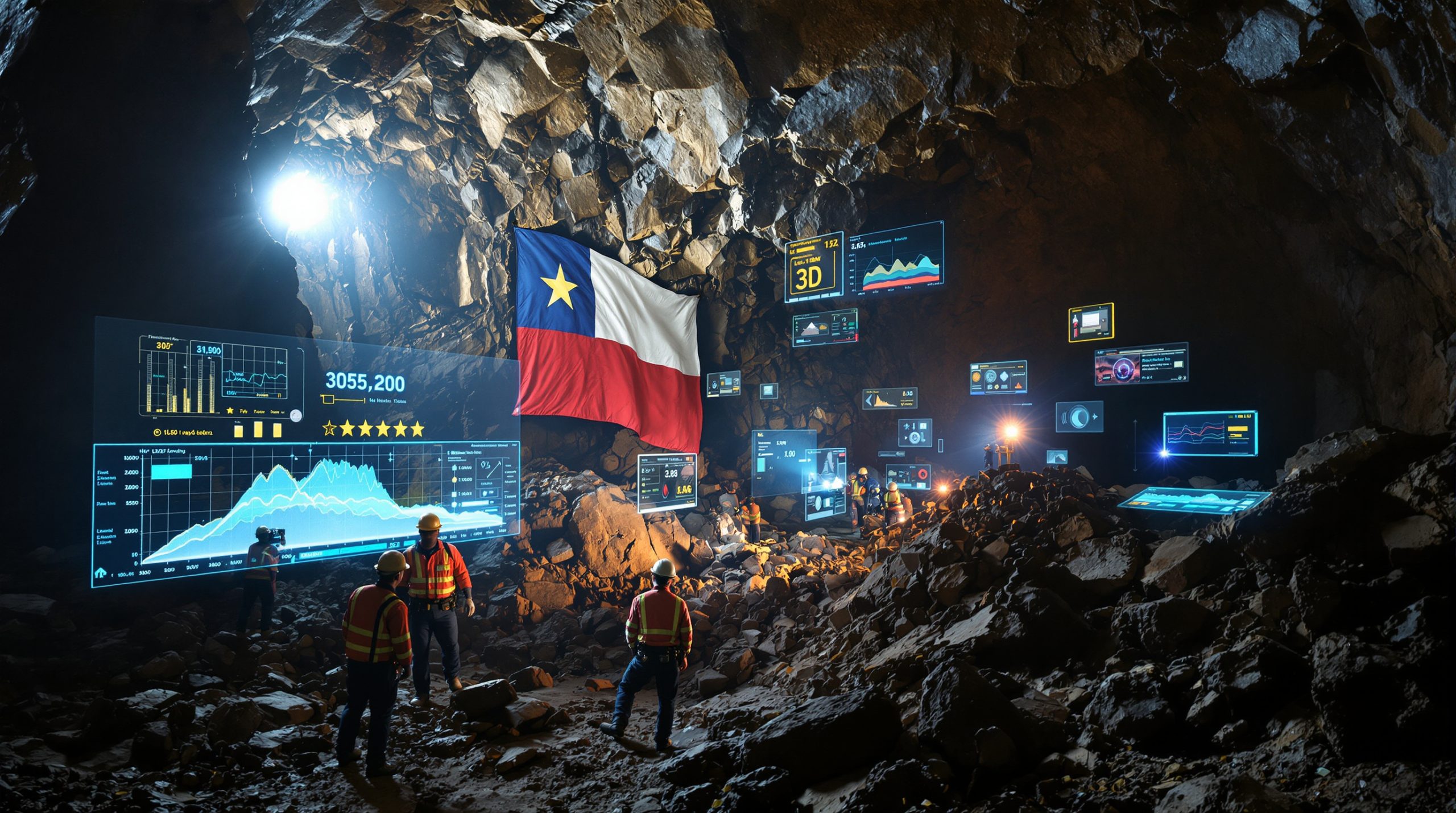Stage 2 Dewatering at Kakula Mine: Progress, Challenges, and Future Operations
In May 2025, the Kakula copper mine in the Democratic Republic of Congo experienced significant seismic activity that necessitated immediate action. This event prompted Kamoa-Kakula's engineering team to develop and implement a comprehensive three-stage dewatering plan to restore operations. As one of Africa's premier copper producers, the mine has been working systematically to address these water management challenges while maintaining operational stability.
How Does the Three-Stage Dewatering Plan Work?
Stage 1: Initial Stabilization Completed
The first phase of the dewatering operation focused on stabilizing and maintaining water levels throughout the mine. This critical initial response was successfully completed on June 2, 2025, establishing the foundation for more extensive dewatering activities to follow.
Key accomplishments during Stage 1 included:
- Implementation of temporary underground pumping infrastructure
- Stabilization of water levels to prevent further flooding
- Preparation of accessible areas for rehabilitation work
- Assessment of damage and development of subsequent recovery plans
The successful completion of Stage 1 marked a significant milestone in the recovery process, providing a stable platform for the more complex Stage 2 operations.
Stage 2: Advanced Dewatering Infrastructure Implementation
The second phase, which is expected to begin imminently, involves the installation of high-capacity submersible pumps and permanent surface infrastructure. This stage represents the most technically complex portion of the dewatering operation.
Key components of Stage 2 include:
- Installation of four new high-capacity submersible pumps from Hefei Hengda Jianghai Pump
- Each pump rated with a pumping capacity of 650 liters per second
- Positioning pumps in pairs down two adjacent 400-meter shafts accessing the eastern side
- Powering the system with a dedicated 20 MW generator to minimize disruption risks
- Utilization of Stage 1 temporary infrastructure to support Stage 2 activities
The technical specifications of these pumps are impressive, with each 4.2 MW submersible pump capable of moving substantial volumes of water. Representatives from the Chinese manufacturer are currently on-site overseeing the installation alongside Kamoa-Kakula's project engineering team.
The pumps will remain fully submerged until approximately the end of November 2025, when the majority of dewatering is expected to be complete. At that point, the water level should reach near the bottom of the Stage 2 dewatering shafts.
Stage 3: Final Rehabilitation and Recommissioning
The third and final phase is scheduled to begin in late 2025 and will focus on:
- Rehabilitation and recommissioning of major existing pump stations on the eastern side
- Utilization of horizontal pumping infrastructure to dewater remaining deep areas
- Complete restoration of normal mining operations across all accessible areas
This final stage will employ existing horizontal pumping infrastructure to access and dewater the deepest sections of the eastern side of the mine, allowing for full operational recovery.
What Progress Has Been Made in Mine Rehabilitation?
Significant progress has already been achieved in rehabilitating the Kakula mine:
- Complete rehabilitation of all currently accessible underground areas
- Restored access to all areas up to current water levels
- Preparation for immediate rehabilitation of eastern sections as water levels subside
- Western side of the mine expected to be fully dewatered within eight weeks
The western section of the Kakula mine represents a particular bright spot in the recovery process. This area experienced no seismic activity during the May 2025 event, which means regaining access to high-grade areas in this section will be relatively straightforward. No additional mine reclamation innovations will be required for the western section, allowing for faster resumption of operations.
When Will Production Return to Normal Levels?
The dewatering and rehabilitation timeline suggests a phased return to production:
- Western side mining access expected within approximately eight weeks
- Mining grades projected to improve notably toward year-end as high-grade western areas become accessible
- Selective mining within existing eastern side workings anticipated in Q1 2026
- Complete production guidance for 2026-2027 expected to be released in mid-late September 2025
- Updated life-of-mine plan to be included in a technical report scheduled for release in late Q1 2026
Industry analysts note that this phased approach allows for progressive improvement in mining output while ensuring safety and operational integrity. The western section's quicker recovery will provide significant production capacity while the more complex eastern rehabilitation continues.
How Will Power Supply Support Recovery Operations?
Ensuring reliable power for both dewatering operations and future production is critical to the recovery plan:
- Stage 2 dewatering at Kakula mine will utilize a dedicated 20 MW generator
- Mechanical and electrical equipment installation for the refurbished Turbine #5 at the Inga II hydroelectric facility is now complete
- Precommissioning activities for Turbine #5 have started and are expected to be completed early in Q4 2025
- Enhanced power infrastructure will support both recovery operations and future production increases
The decision to power the submersible pumps with a dedicated generator system demonstrates the operational team's focus on minimizing disruption risks. By creating redundancy in the power supply, the mine can ensure continuous dewatering operations regardless of potential grid issues.
What Challenges Remain in the Dewatering Process?
Despite significant progress, several challenges remain in the dewatering and rehabilitation process:
- Coordinating the complex installation of submersible pumps in deep mine shafts
- Managing potential additional rehabilitation requirements in the eastern section
- Ensuring continuous power supply for pumping operations
- Maintaining equipment performance under demanding conditions
- Balancing dewatering activities with progressive resumption of mining operations
The technical complexity of lowering and installing massive 4.2 MW submersible pumps down 400-meter shafts represents a significant engineering challenge. This operation requires precise coordination between the mine's engineering team and representatives from the pump manufacturer.
Water Management Innovations
The dewatering process has necessitated innovative approaches to water management:
- Implementation of advanced monitoring systems to track water levels in real-time
- Development of staging areas for progressive pump installation
- Creation of redundant pumping systems to ensure operational continuity
- Adaptation of existing infrastructure to support new high-capacity equipment
- Integration of temporary and permanent systems during transition phases
These innovations not only support the current recovery operations but will likely enhance the mine's renewable energy in mining capabilities for the future.
What Are the Long-Term Implications for Kakula Mine?
The comprehensive approach to dewatering and rehabilitation demonstrates the operational resilience of the Kakula mine. The three-stage plan addresses immediate challenges while positioning the operation for sustainable future production.
Key long-term considerations include:
- Enhanced water management systems to mitigate future risks
- Improved emergency response capabilities
- Optimized mining sequences in rehabilitated areas
- Updated production forecasts reflecting post-rehabilitation capabilities
- Strengthened infrastructure to support continued operations
The experience gained during this recovery process will likely inform future mine planning and risk management strategies across the industry. The successful implementation of such a complex dewatering operation provides valuable copper project insights for other mining operations facing similar challenges.
Environmental Considerations
While the immediate focus is on dewatering and operational recovery, environmental considerations remain important:
- Water quality monitoring throughout the dewatering process
- Appropriate treatment of pumped water before discharge
- Minimization of environmental impact during recovery operations
- Implementation of enhanced monitoring systems for early detection of potential issues
- Development of more robust environmental management plans based on lessons learned
Strategic Recovery Underway
The systematic implementation of the three-stage dewatering plan at Kakula mine demonstrates a methodical approach to addressing the challenges posed by the May seismic event. With Stage 1 complete and Stage 2 about to commence, the operation is on track for progressive recovery through the remainder of 2025.
The western side of the mine is expected to return to production relatively quickly, with the eastern side requiring more extensive rehabilitation following dewatering. This phased approach will allow for a gradual improvement in mining grades and production volumes as more areas become accessible.
The upcoming production guidance and technical report will provide greater clarity on the medium and long-term outlook for this significant copper operation. The experience at Kakula demonstrates both the challenges and resilience inherent in modern mining operations when faced with unexpected natural events.
Industry Implications
The Kakula recovery operation provides valuable lessons for the broader mining industry:
- Importance of comprehensive emergency response planning
- Value of redundant systems for critical infrastructure
- Benefits of phased recovery approaches following major incidents
- Significance of maintaining operational flexibility
- Necessity of transparent communication regarding recovery timelines and expectations
Mining operations worldwide will likely study the Kakula dewatering project as a case study in effective crisis management and operational recovery. Furthermore, these lessons will contribute to ongoing industry innovation trends as companies adapt to new challenges.
Further Exploration
Readers interested in learning more about copper mining operations in the Democratic Republic of Congo can also explore related educational content available through Ivanhoe Mines' recent production reports, which offer additional perspectives on mining developments in Central Africa.
The challenges and solutions demonstrated at Kakula represent the cutting edge of modern mining recovery operations and highlight the industry's ability to overcome significant operational disruptions through technical innovation and sustainable mining transformation planning.
Looking for the Next Major Mining Discovery?
Gain instant alerts on significant ASX mineral discoveries through Discovery Alert's proprietary Discovery IQ model, transforming complex geological data into actionable investment insights. Explore why historic discoveries can generate substantial returns by visiting the Discovery Alert discoveries page and begin your 30-day free trial today.




